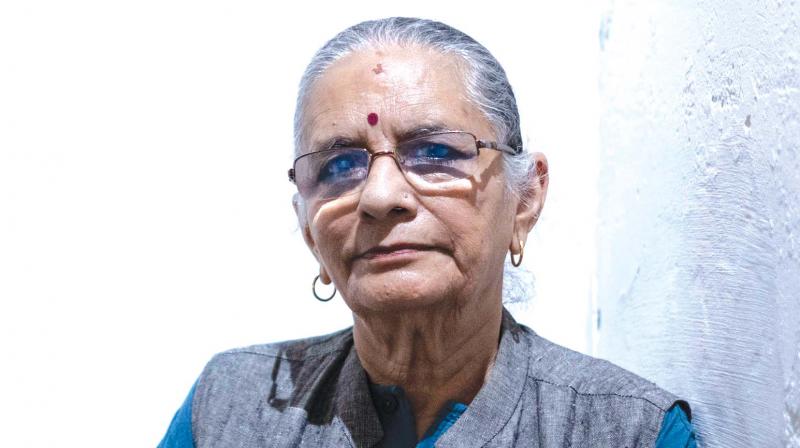Colours of a village

Imbued with a child-like creativity, Madhvi Parekh’s paintings and sculptures at the Kochi-Muziris Biennale evoke a fantasy world populated with motifs from traditional forms of art.
As a Gujarati settled in Delhi, her art practice has been shaped by her upbringing in the country’s west. Most importantly, Madhvi owes it to her exposure to different forms of painting that were part of her family’s daily rituals. These included traditional decorative motifs and floor designs of rangoli.

“I have never forgotten the sights and sounds of my village, which I interwove with elements from my life in metropolitan cities,” says Madhvi, who was born in Sanjaya village near Ahmedabad. The 77-year-old artist was greatly inspired by the evocative sights of nature, especially catching the sunset as she got back home from school. Such influences have made colours integral to her work.
In her exploration of traditional Indian art, childhood memories such as popular folk stories and legends from her village also make way into Madhvi’s canvas. She weaves together myriad patterns, impressions, human and animal forms and scenes from everyday rural life, creating a unique visual language. The result is a spontaneous process of art making that has more to do with her being a self-taught artist, besides the influence of her husband and well-known artist Manu Parekh.

“I start at any point that suits me,” left-handed Madhvi speaks about her technique. “From there and from there on, my painting grows like a tree or a creeper.”
The artist’s biennale presentation, on view at the Aspinwall House in Fort Kochi, shows paintings made out of charcoal and acrylic, apart from sketches in ink. A large, three-panel painting, hung prominently in the exhibition, recreates rural life in a maze-like setting. In all her works, the form of the narrative is emphasised, establishing her as an artist-storyteller.
Her exhibition also showcases a set of four black and white sculptures. Created with humble materials such as bamboo and paper pulp, the exhibits can be likened to a tableau presentation celebrating countryside earthiness.
Known to combine traditional art-forms in a contemporary style, Madhvi belongs to a generation of 20th-century women artists who significantly contributed to the rise of modernism in India. These include pioneers like Mrinalini Mukherjee, Nilima Sheikh, Nalini Malini, Arpita Singh, Nasreen Mohamedi and Amrita Sher-Gil.
Madhvi started exhibiting her works in the 1970s, with a solo at Chemould Art Gallery, Kolkata. She has since exhibited her works all over the world in multiple group and individual exhibitions. During the initial phase of her career, she received a national award from Lalit Kala Akademi, New Delhi. Her art practice has also been shaped by scholarships and residences in France and the USA.

